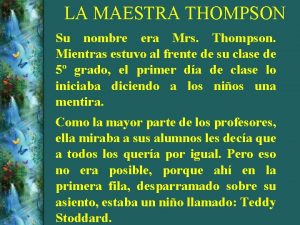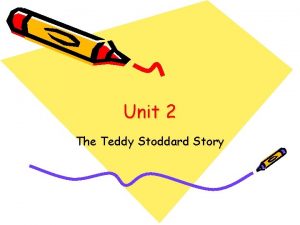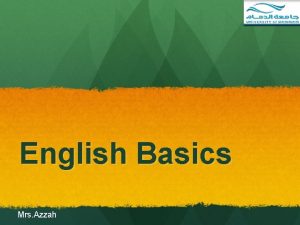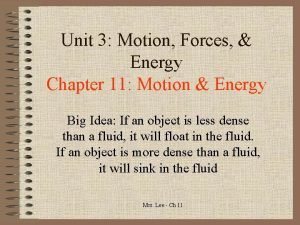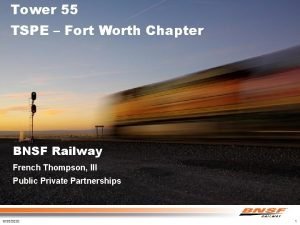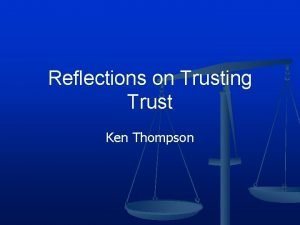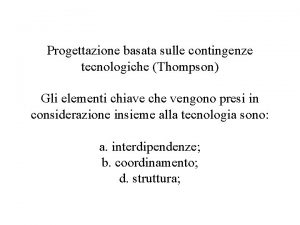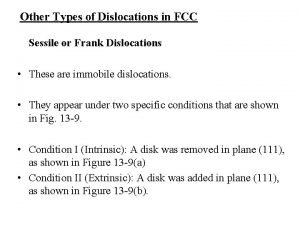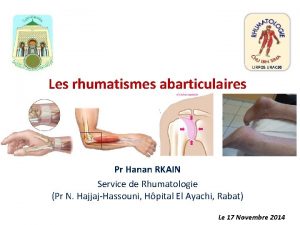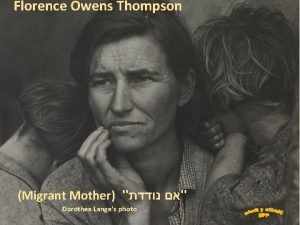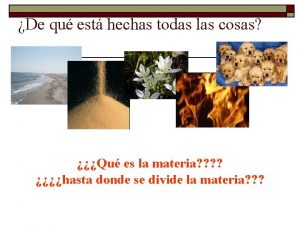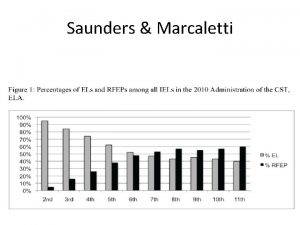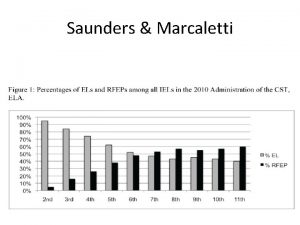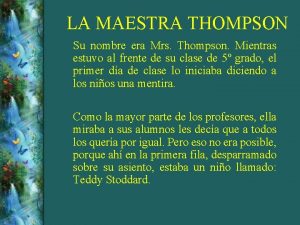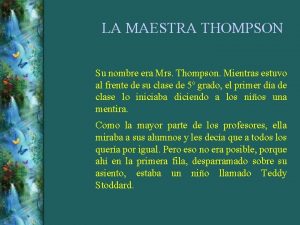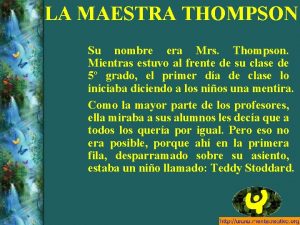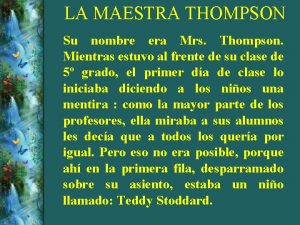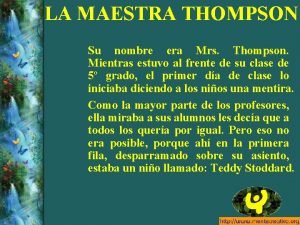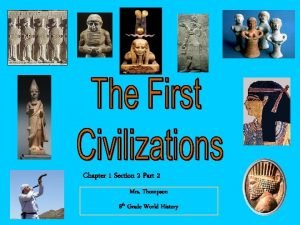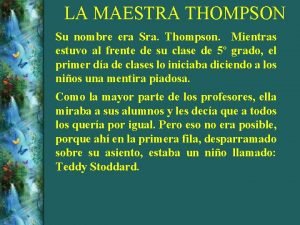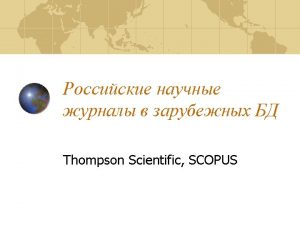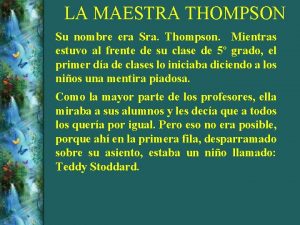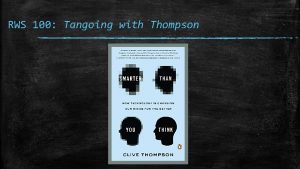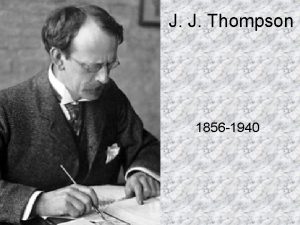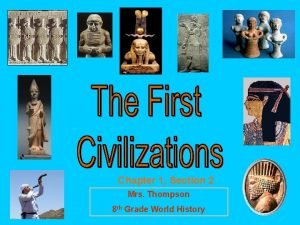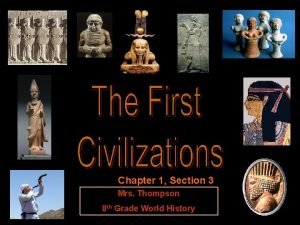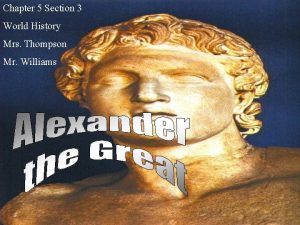Chapter 3 Part 1 Mrs Thompson 8 th



































- Slides: 35

Chapter 3, Part 1 Mrs. Thompson 8 th Grade World History

Mesopotamians




Over thousands of years, some of the early farming villages developed in complex societies called civilizations CIVILIZATIONS INCLUDE: 1. 2. 3. 4. 5. 6. Cities Organized governments Art Religion Class divisions Writing


Mesopotamian Civilization What is civilization? a complex society with cities, an organized government, art, religion, a system of writing, and class divisions

The 1 st civilizations arose in river valleys because: 1. Good farming conditions made it easy to feed large numbers of people. 2. Rivers also made it easy to get from one place to another and trade.

Trade provided a way for goods and idea to move from place to place. The growth of cities led to the for organization and the formation of governments. need

Leaders took charge of: 1. Organizing food supplies 2. Building projects 3. Assembling armies 4. Making laws to keep order People in river valleys began to: 1. Develop religion and the arts 2. Invent ways of writing to pass on information 3. Create calendars to keep track of planting seasons

The earliest known civilization arose in the Tigris and Euphrates River Valley. The area was called Mesopotamia and it was located where southern Iraq is today.

Mesopotamia is Greek for “the land between the rivers. ” The area between the Tigris and Euphrates is also called the Fertile Crescent because it is a curving strip of land that extends from the Mediterranean Sea to the Persian Gulf

The Ancient Fertile Crescent Area The Middle East: “The Cradle of Civilization”

Mesopotamia had a hot, dry climate and depended on the flooding of the rivers to provide water for farming. The flooding was very unpredictable, so the farmers believed they needed gods to help them. Eventually farmers learned to build dams and channels for irrigation to water their crops. http: //www. mesopotamia. co. uk/geography/challenge/cha_set. html

Try your luck at being a farmer in ancient Mesopotamia!! http: //www. mesopotamia. co. uk/g eography/challenge/cha_set. html

Mesopotamian Civilization What effect did irrigation have on the people of Mesopotamia? Irrigation allowed farmers to grow plenty of food. More food meant more people could be fed, so the population grew.

Sumerians By 3000 B. C. many cities had formed in Mesopotamia in a region called Sumer

What were City. States? Sumerian cities were isolated from each other by geography and each had their own government. Sometimes the cities of Sumer went to war with one another.

What were City-States? Sumerians built walls around their cities from river mud mixed with crushed reeds to form sun-dried bricks. They also built homes, temples, and public buildings from sun-dried bricks. http: //www. mesopotamia. co. uk/ziggurats/challenge/cha_set. html

Gods and Rulers Sumerian Religion – Polytheistic or belief in many gods or “deities” En ki Innan a

The Annunaki

The Annunaki

Gods and Rulers Sumerians believed in many gods, each thought to have power over a natural force or human activity. This is called polythetheism For example: flooding To please their gods, Sumerians built grand temples called ziggurats to the chief god.

Ziggurat at Ur § Temple § “Mountain of the Gods” § Ziggurat means “mountain of gold” or “hill of heaven. ”

At the top of the ziggurat was a shrine where priests and priestesses could enter and pray to the gods. Priests and priestesses were powerful, controlled much of the land, and may have been rulers. http: //www. mesopotamia. co. uk/tombs/challenge/cha_set. html

Eventually, war-hero kings took control of the government and made their position hereditary. Hereditary means that the oldest male inherits the right to rule. Sumerian kings lived in large palaces while the ordinary people lived in small mud-brick houses.

Mesopotamian City-State

Most people in Sumer farmed but some were artisans who made metal products, cloth, or pottery. Sumerian traders and merchants traded tools, wheat, and barley to other cities in exchange for copper, tin, and timber.

Mesopotamian Harp

Sophisticated Metallurgy Skills in Mesopotamia

Board Game From Ur http: //www. mesopotamia. co. uk/tombs/chall enge/cha_set. html http: //www. mesopotamia. co. uk/tombs/c hallenge/cha_set. html

People in Sumer were divided into 3 social classes: 1) The upper class included kings, priests, and government officials. 2) The middle class included artisans, merchants, farmers, and fishers. It was the largest group. 3) The lower class included enslaved people who worked on farms or in the temples.

Enslaved people were forced to serve others and were thought of as property. People who were slaves usually were: 1. Prisoners of war 2. Criminals 3. Debtors

In Sumer, men and women had separate roles: Only men attended school and they headed households. Women had rights, could buy and sell property, and could run businesses.
 Thompson y thompson
Thompson y thompson La profesora miss anderson
La profesora miss anderson Mrs thompson and teddy story
Mrs thompson and teddy story They are mrs garcia and mrs castro
They are mrs garcia and mrs castro They are mrs garcia and mrs castro
They are mrs garcia and mrs castro Mrs. darling was ___________ of mrs. s.
Mrs. darling was ___________ of mrs. s. Bought a beautiful dress at the mall
Bought a beautiful dress at the mall Part part whole addition
Part part whole addition Unit ratio definition
Unit ratio definition Part part whole
Part part whole What is technical description
What is technical description Parts of bars
Parts of bars The part of a shadow surrounding the darkest part
The part of a shadow surrounding the darkest part Two way anova minitab 17
Two way anova minitab 17 Chapter 11 section 3 motion and force answer key
Chapter 11 section 3 motion and force answer key How to expand the pie in negotiation
How to expand the pie in negotiation French thompson bnsf
French thompson bnsf Appraisal
Appraisal Homan's sign
Homan's sign Leticia thompson
Leticia thompson Segmentation of rural market
Segmentation of rural market Relata a senhora thompson
Relata a senhora thompson Ken thompson trusting trust
Ken thompson trusting trust Simon thompson kent
Simon thompson kent Interdipendenze generiche
Interdipendenze generiche Shantel thompson
Shantel thompson Jason vallone wife swap
Jason vallone wife swap Thompson tetrahedron fcc
Thompson tetrahedron fcc Kevin thompson nsf
Kevin thompson nsf Face to face class
Face to face class Budin de pasas thompson
Budin de pasas thompson Signe de thompson
Signe de thompson Kenneth lane thompson
Kenneth lane thompson Florence owens thompson ruby sprague
Florence owens thompson ruby sprague Warren thompson's demographic transition model
Warren thompson's demographic transition model Modelo atomico de thomson budin de pasas
Modelo atomico de thomson budin de pasas

